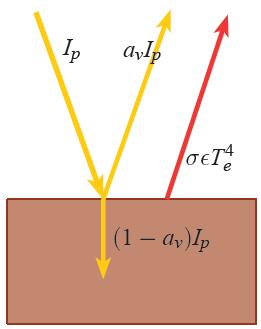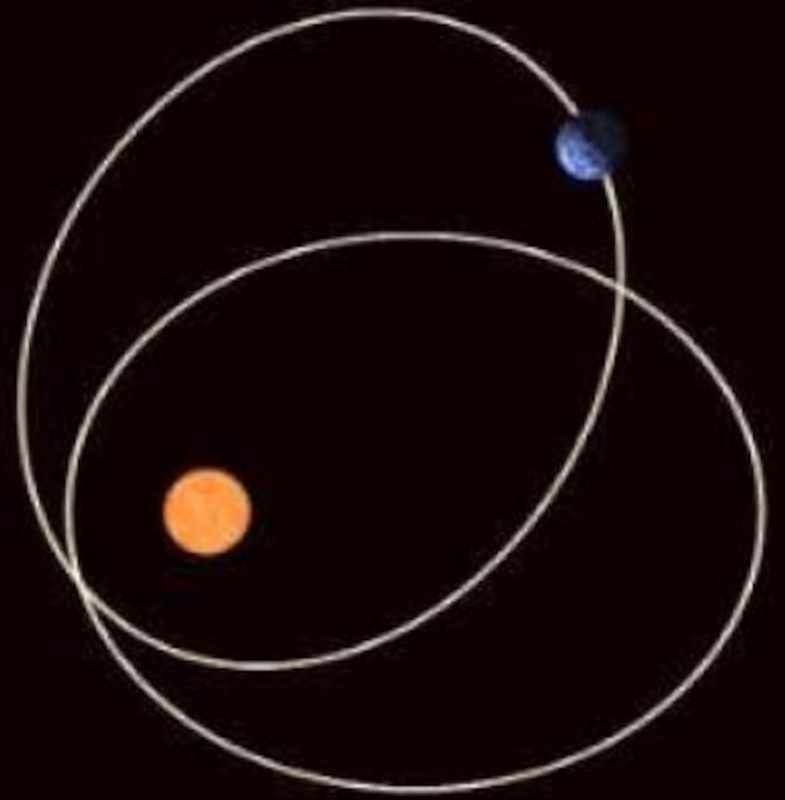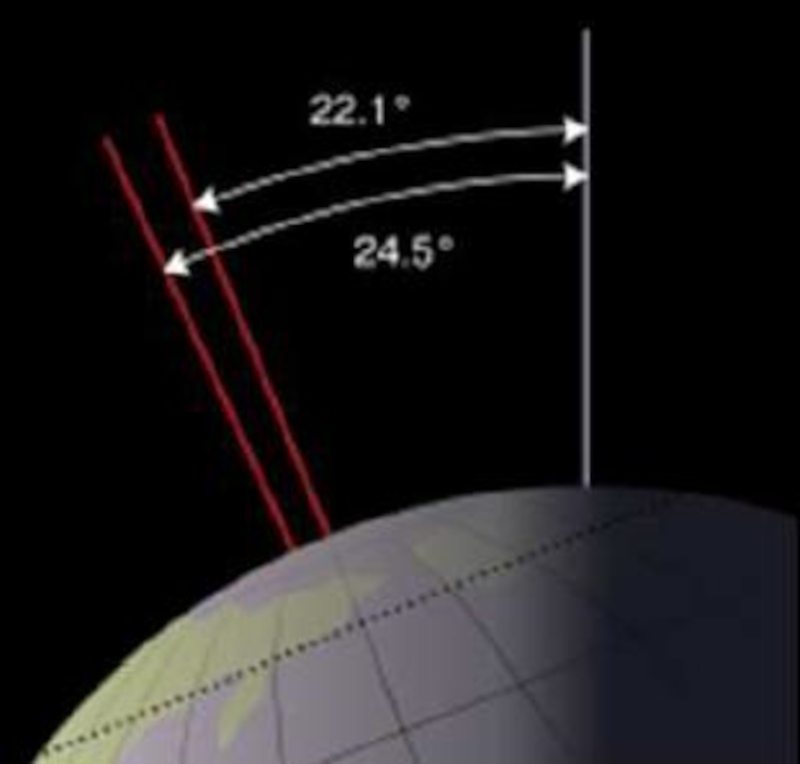Climate bases and their fluctuation
Storyboard 
The fluctuations of the Earth's orbit have a direct effect on the radiation balance and with it the Earth's climate.
ID:(538, 0)
Mars: an example of a planet with little atmosphere
Description 
As a first approximation, Mars can be considered to have no atmosphere, allowing for a relatively simple modeling approach:

ID:(3070, 0)
Radiation balance on planet without atmosphere
Description 
In the case of an atmosphere-less planet, there is a fraction of the incident radiation $I_p$ that is reflected as $a_{
u}I_p$, another fraction is absorbed as $(1-a_{
u})I_p$, and a fraction of the infrared radiation $\sigma\epsilon T_e^4$ is emitted:

ID:(3069, 0)
Temperature of a planet without atmosphere (0D)
Equation 
The planet absorbs and re-emits radiation received from the sun. The absorbed energy by the planet corresponds to the radiation not reflected, which can be expressed as
$(1-a_v)I_s$
This energy heats up the planet to a temperature $T_p$. The resulting heating leads to infrared radiation, which can be described by the Stefan-Boltzmann law as
$\sigma\epsilon T_p^4$
where $\sigma$ is the Stefan-Boltzmann constant and $\epsilon$ is the emissivity.
In an equilibrium state, the absorbed energy and the emitted energy are equal, given by
$(1-a_v)I_s=\sigma\epsilon T_p^4$
This equation allows us to calculate the temperature $T_p$ of the planet:
Using this equation to estimate the temperatures of different planets, we obtain the following data:
Planet | Intensity [W/m^2] | Albedo [-] | Temperature [C] | Range [C]
:----------|:---------------------------|:-------------|:----------------------|:--------------:
Mercury | 9126.49 | 0.088 | 345.83 | -180 to 430
Venus | 2613.78 | 0.76 | 51.17 | 465
Earth | 1367.56 | 0.306 | 86.54 | -89 to 58
Mars | 589.04 | 0.25 | 23.95 | -82 to 0
Jupiter | 50.52 | 0.503 | -128.09 | -150
Saturn | 15.04 | 0.342 | -158.22 | -170
Uranus | 3.71 | 0.3 | -190.86 | -200
Neptune | 1.51 | 0.29 | -207.18 | -210
It is interesting to note the deviations, especially for planets closer to the sun, which are influenced by their respective atmospheres.
In this model, surface variations and atmospheric altitude changes are not taken into account. Therefore, the planet is modeled as a zero-dimensional point (0D).
ID:(4669, 0)
Precession of the earth's axis
Description 
Apart from nutation, the Earth's axis undergoes a rotational movement known as precession.

None
The consequence of precession is that the timing of summer and winter changes over time. With a precession period of 26,000 years, every 13,000 years the seasons are reversed.
ID:(3087, 0)
Reflected intensity
Equation 
Si la intensidad visible del sol es
| $ I_r = a_v I_s $ |
ID:(4668, 0)
Orbit precession
Description 
The solar intensity fluctuates depending on the precision of the orbit:

None
ID:(3089, 0)
Nutation of the earth's axis
Description 
The Earth's axis varies in its inclination between 22.1 and 24.5 degrees. This process is called nutation.

Nutation is caused by factors such as the gravitational influence of the Moon on Earth and the Earth's non-perfectly spherical shape. Each factor has its own typical period, with the longest being around 41,000 years. It is believed that the last maximum value occurred approximately 10,700 years ago (8,700 BC), coinciding with the end of the last Ice Age.
ID:(3086, 0)
Milankovitch cycles
Description 
Fluctuations in the orientation of the axis and variations in the Earth's orbit have led to a decrease in solar radiation reaching the planet, resulting in periods of cooling and the formation of ice ages.

None
The last ice age ended approximately 10,000 years ago.
ID:(3090, 0)
